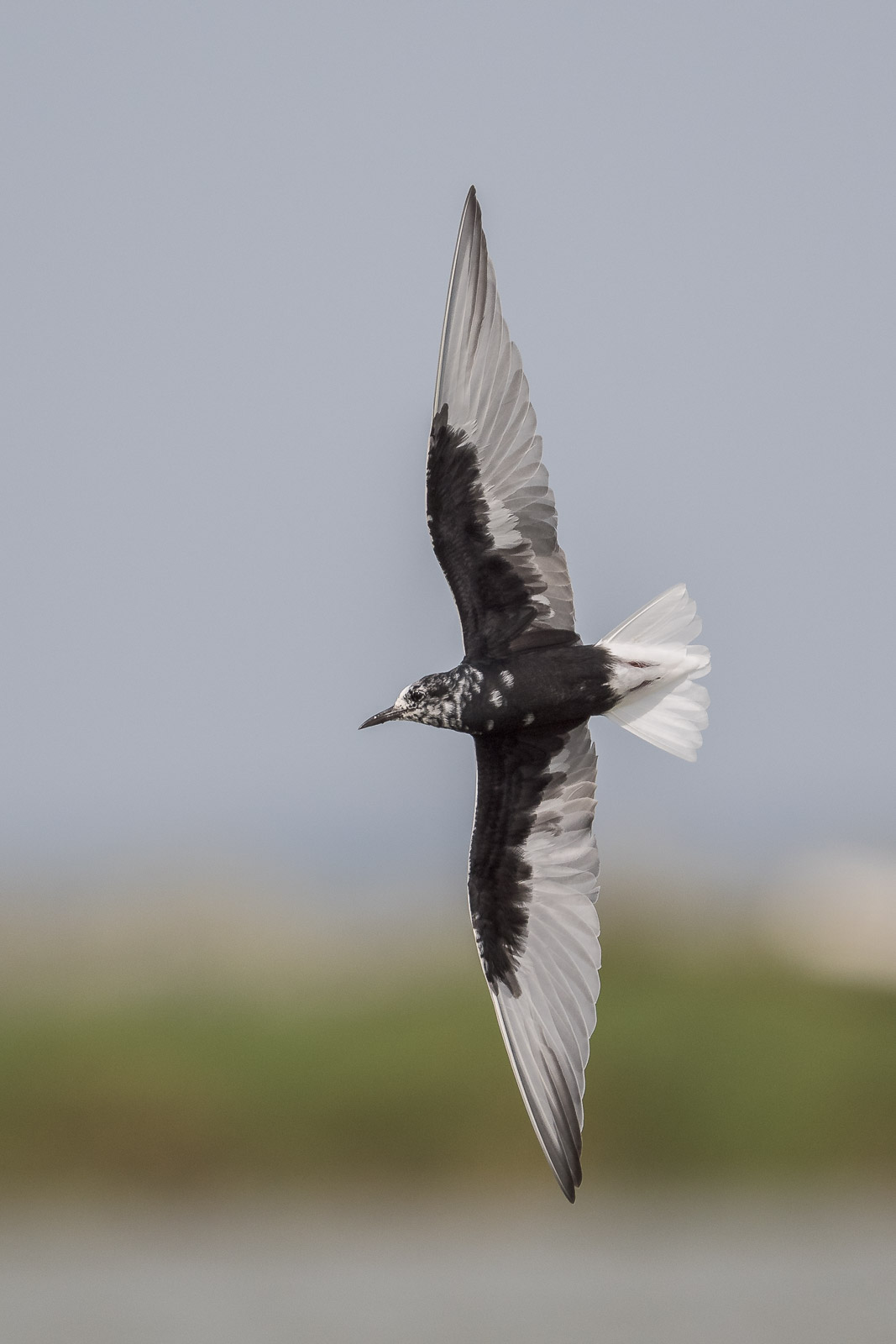I have, it must be said, been hanging off making this post. I was hoping, somewhat against hope, the I’d get another day down at the WTP with these delightful birds, but sad to say, the season has changed, the birds are on the move, and the fickle weather has finally arrived with some decent rain for the hard stressed environment.
White-winged Terns, (used to be called White-winged Black Tern for obvious reasons), pay a visit to the south over the mid-of-summer through most of autumn. They feed up on the rich supply of insects along the bunds and over the waters at the treatment plant. I suspect we see somewhere between 50-100 of them over the period.
The breeding birds also begin to colour up readying for their trip north. They are not huge migrants, like say Red-necked Stints, but still their journey north will take them into South-East Asia, and as far as China and India. Hard to find definitive data. There is also a branch of the family that breeds as far up as northern Europe. I think they spend the summer around the Mediterranean.
We all, I suppose, have birds that intrigue us to one extent or another, and White-winged Terns are one of those birds for me. I think mostly because of their consistent habit, and their lovely changeable plumage. Most seasons they seem to work in just a few ponds at the WTP, it changes a bit with the food source, but most times if they are locatable, and not on far-off ponds that have no access, they present a wonderful show of hunting close into the edges of the ponds and over the grass verges. Making it easy to get closeups, if and I did say, if, I can keep them in the viewfinder. Like all terns the flight path is not erratic, but certainly not predictable.
We have had several sessions with the birds, and rather than try and explain it all, the following shots should speak volumes for the beauty and delicate nature of these birds.
Hopefully it might also show just a little bit of my interest and enjoyment of their visit and how much I appreciate such a challenging subject.
Enjoy.





Till next year, travel well little birds, your visit was most appreciated.









Such lovely birds, and a beautiful series of photographs of them. Thanks David.
LikeLiked by 1 person
Hi Eleanor thanks for dropping by. Time is just too short to do real justice to their elegance.
LikeLike
Isn’t the cycle extraordinary. There’s so much we’ll never fully know. Like how each one knows how to find its next destination. Amazing to think about and lovely pictures!
LikeLiked by 1 person
G,day Derek,
Just watching them work the ponds is an lesson in their extraordinary skill set. They can be one moment all feeding, and on the next, swirling high and disappearing to a far pond, then perhaps 20 minutes or more later, they all descend out of the sky to work in the first pond again. At first it seems random, but with a bit of careful observation the ‘pattern’ does become obvious.
LikeLike
Wonderful images. The migratory birds are amazing the way they cover great distances and unerringly finding their way.
The rain is most welcome, 14 mm in the gauge overnight.
LikeLiked by 1 person
Yep, sounded pretty good on the pergola tin roof.
LikeLike
How wonderful to see these Terns with breeding plumage, I have never seen them. Beautiful captures as always David. I had a lifer yesterday, I actually saw the Swift Parrot for the first time, but was extremely difficult to get a decent image, as they are so small, and like the under canopy of the highest eucalypts. There are a number of Swiftys around Sydney at present. Have a wonderful weekend!
LikeLiked by 1 person
G,day AB, thanks for dropping by and commenting,
We only have them for a few months, and their timing is quite variable. But they hunt mostly as a large group so its not to hard to work with them once we locate them.
Well done on the Swiftys. Such a superb little parrot. We had a couple of weeks last year with them at Eynesbury, quite unexpected, and I suppose that is they way with them. Most of our flowering gums are in hibernation because of the dry weather, but hopefully that will change soon.
Funnily enough we already have some winter wattle in full show. Stange seasons indeed.
Good luck
LikeLiked by 1 person
I notice one of the birds in photos above has an orange flag. I wonder who banded the bird and where?
LikeLiked by 1 person
Hi John,
Well spotted. Mostly they carry the legs all tucked under the feathers and are a bit hard to see.
Anyways, the best data I can find is here.
Click to access Other_waterbirds_color_markings_in_EAA_Flyway_20150409.pdf
Page 12 has all the detail. (and the old name for the birds. Such is renaming)
It seems the Orange tag is a Victoria colour. (I think its used for other species as well)
I’ve no idea where the banding might have occured.
Hope that helps.
LikeLike